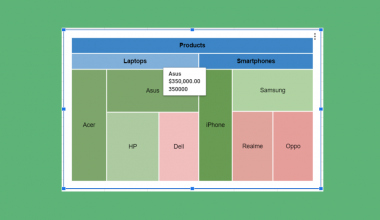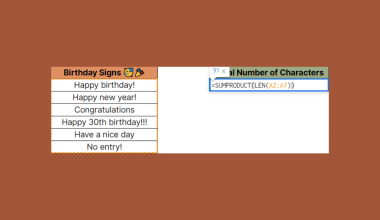This guide will explain how to use the WEIBULL.DIST function in Google Sheets.
Table of Contents
The Weibull distribution is a type of probability distribution that is widely used in the field of reliability engineering. This discipline involves using statistical models to understand the lifespan of a product and predict when it might fail.
Engineers use the Weibull distribution to calculate the likelihood of a certain part or model lasting a certain timespan before it fails. The distribution is useful because it can be easily modified to model various types of scenarios, such as the failure rate of a car engine, a lightbulb, or a cellphone.
In Google Sheets, you could use the WEIBULL.DIST function to predict the failure rate of whatever product you’re working with.
In this guide, we will provide a step-by-step tutorial on how to use the WEIBULL.DIST function.
The Anatomy of the WEIBULL.DIST Function
The syntax of the WEIBULL.DIST function is as follows:
=WEIBULL.DIST(x, shape, scale, cumulative)
Let’s look at each argument to understand how to use the WEIBULL.DIST function.
- x refers to the input to the Weibull distribution function.
- shape refers to the shape parameter of the Weibull distribution function. This argument must be greater than 0.
- scale refers to the scale parameter of the Weibull distribution function. The value of this argument must be greater than 0.
- cumulative determines whether the
WEIBULL.DISTfunction uses a cumulative distribution function (if the argument is set to TRUE) or a probability density function (if the argument is set to FALSE.
A Real Example of Using the WEIBULL.DIST Function
Let’s explore a simple use case where we can apply the WEIBULL.DIST function.
The Weibull distribution can be modified using the alpha and beta parameters. These values determine the shape and scale of the distribution and are often derived from historical data.

In the table above, we’ve provided the parameters needed to define a Weibull distribution that models the failure rate of a certain product. Our Weibull distribution uses an alpha value of 2 and a beta value of 5000. We’ll use the “Hours Used” value as the x input of our distribution function.
We can use the following formula to determine the likelihood of failure:
=WEIBULL.DIST(B3,B1,B2,TRUE)
This formula consists of (B3) – Weibull distribution input, (B1) – shape, (B2) – scale, and since we want to know the probability of failure up to a certain time period, we’ve set the cumulative argument to TRUE.

Using this formula, we’ve determined that there is a 3.92% chance for a product to fail after 1000 hours of usage, given that the failure rate follows our estimated distribution.
We can calculate the reliability of the product by subtracting the result of WEIBULL.DIST from 1. We’ll use the formula =1 – B4 to compute the reliability of our product after 1000 hours.

We can then use the WEIBULL.DIST function across a range of time values to see how a product’s reliability changes over time.

In the table above, we’ve calculated the survival probability and reliability of a product at various values of x.
Click on the link below to create your own copy of our examples.
Head to the next section to read our step-by-step tutorial on how to start using the WEIBULL.DIST function in Google Sheets.
How to Use the WEIBULL.DIST Function in Google Sheets
- Provide the alpha and beta values you want to use for the Weibull distribution. These values will be used as the shape and scale arguments for the
WEIBULL.DISTfunction.
- Next, create a table with two columns: the time-to-failure variable (x) and the survival probability. The unit used for x changes depending on the context.
 In this example, we’ll set the unit of time to hours. The survival probability column will determine how many units are expected to fail within the designated number of hours.
In this example, we’ll set the unit of time to hours. The survival probability column will determine how many units are expected to fail within the designated number of hours. - Use the
WEIBULL.DISTfunction to calculate the survival probability. In this example, we’ll use the formula =WEIBULL.DIST(A5,$B$1,$B$2,TRUE) to find the survival probability of a product within the first 100 hours. We’ve converted the alpha and beta parameters into fixed references using the ‘$’ symbol. This will allow us to use these same values when we copy the formula later on. In this example, the survival probability after 100 hours is 0%.
In this example, the survival probability after 100 hours is 0%. - Use the Auto-Fill tool to copy the
WEIBULL.DISTfunction to find the remaining values.
- To find the reliability rate, subtract the survival probability from 1.
 In this example, we used the formula =1-B5 to find the reliability of a product after 100 hours of use.
In this example, we used the formula =1-B5 to find the reliability of a product after 100 hours of use. - Use the Auto-Fill tool to find the reliability for each of the given time frames in the table.

These steps are everything you need to know to start using the WEIBULL.DIST function.
FAQs
- Can I use the WEIBULL.DIST function for data that doesn’t follow a Weibull distribution?
TheWEIBULL.DISTfunction is best suited to model data that follows a Weibull distribution. While this distribution is flexible, other types of distributions may be a better choice. Google Sheets includes various built-in functions that can model other distributions. For example, theNORMDISTfunction models the normal distribution and thePOISSON.DISTfunction models the Poisson distribution function. - How do the shape and scale parameters of the WEIBULL.DIST function affect the output?
The shape parameter (alpha) affects the overall shape of the Weibull distribution. If alpha is less than 1, the failure rate decreases over time. An alpha greater than 1 models a failure rate that increases with time. An alpha equal to 1 indicates a constant failure rate.
The scale parameter (beta) scales the distribution along the x-axis. The value of the scale parameter equals the 63.2 percentile of the distribution. We can increase the beta value to model a longer time to failure.
To learn more about using Google Sheets for modeling distributions, you can read our post on how to create a bell curve graph.
That’s all for this guide! Don’t forget to check out our library of spreadsheet resources, tips, and tricks!







